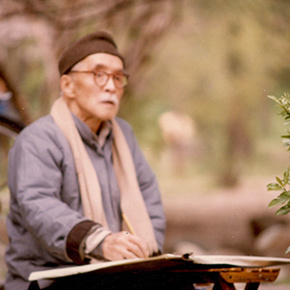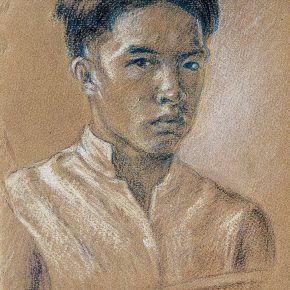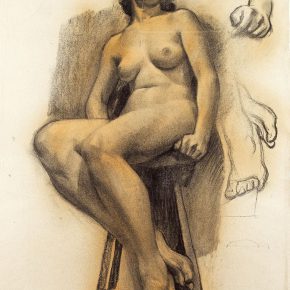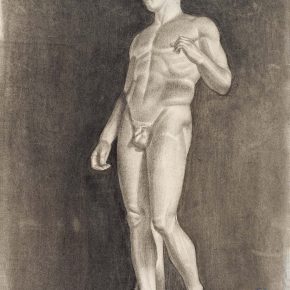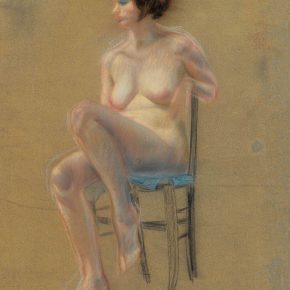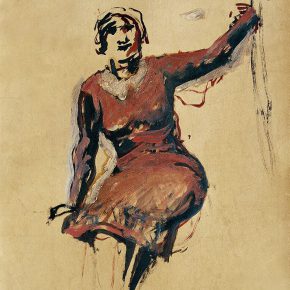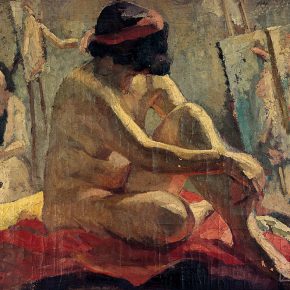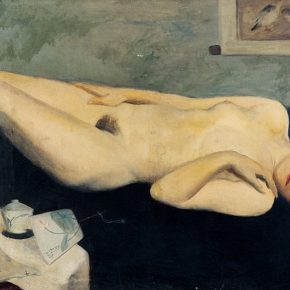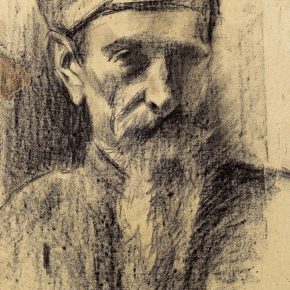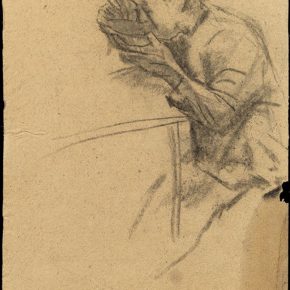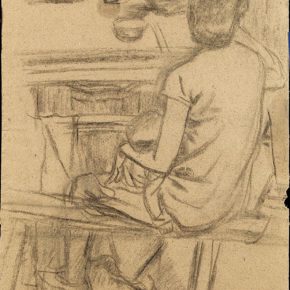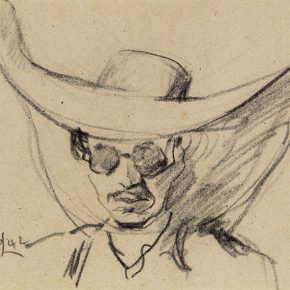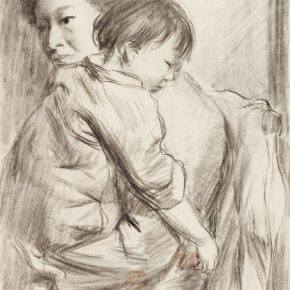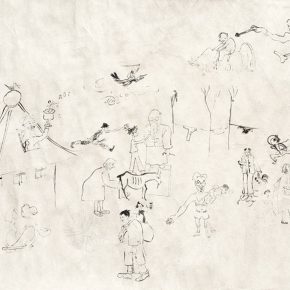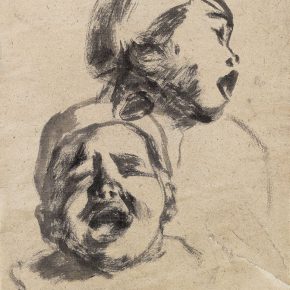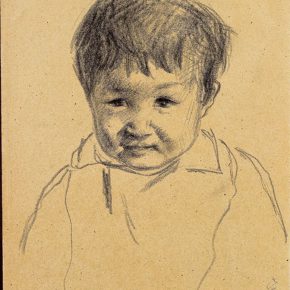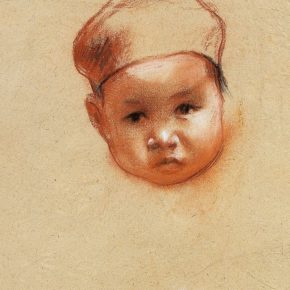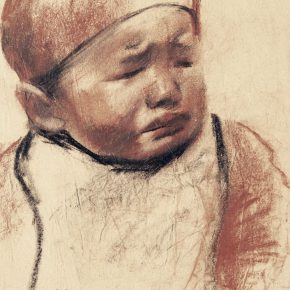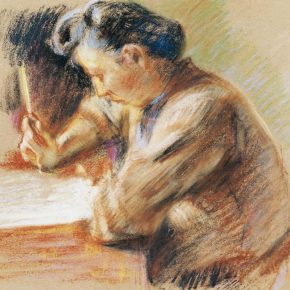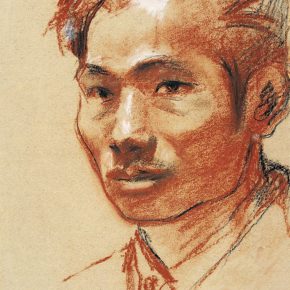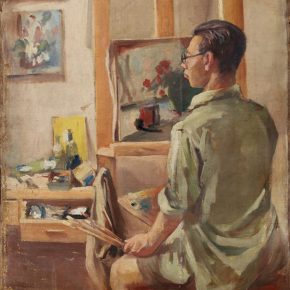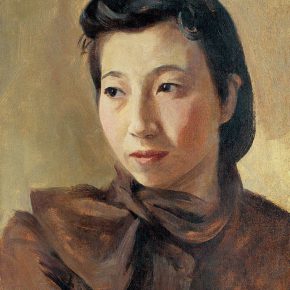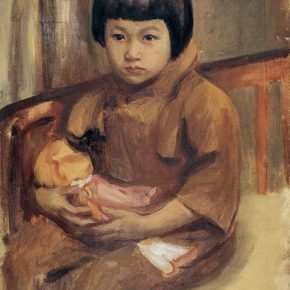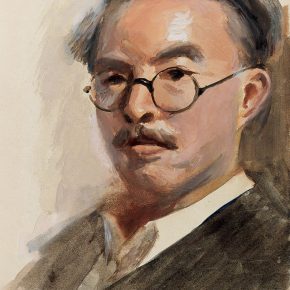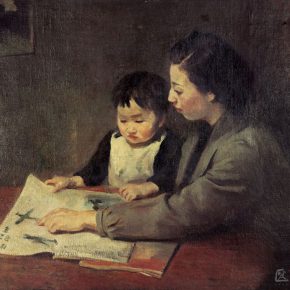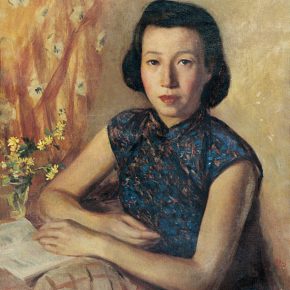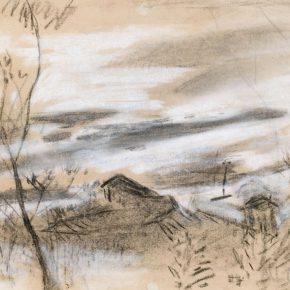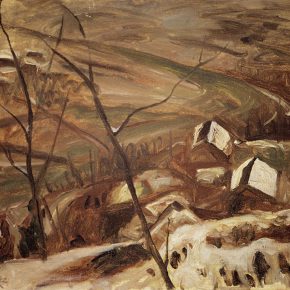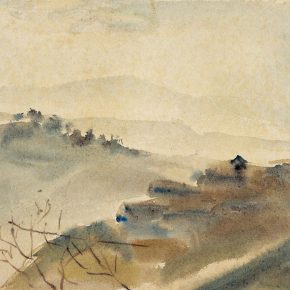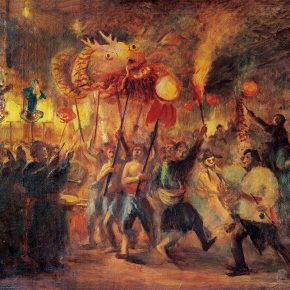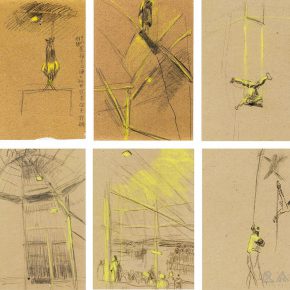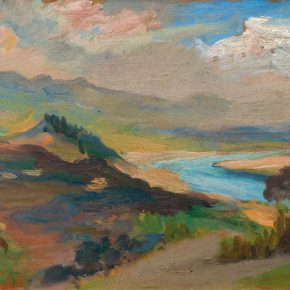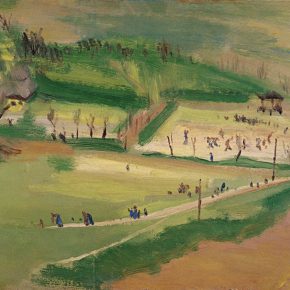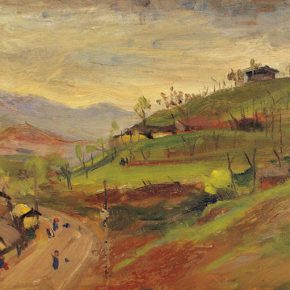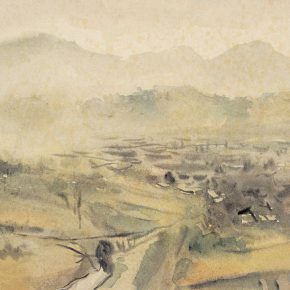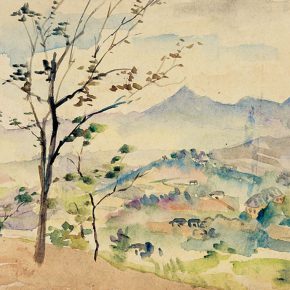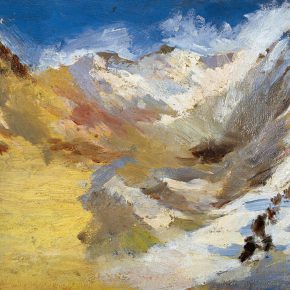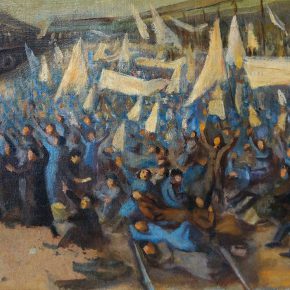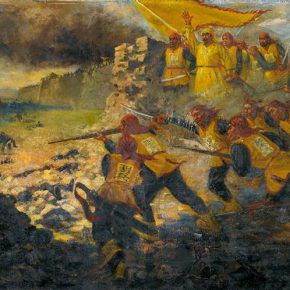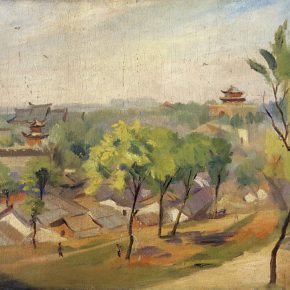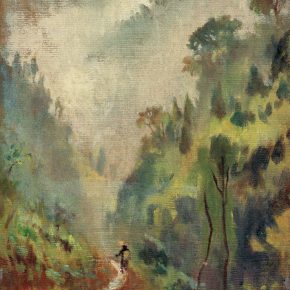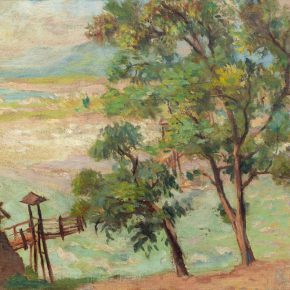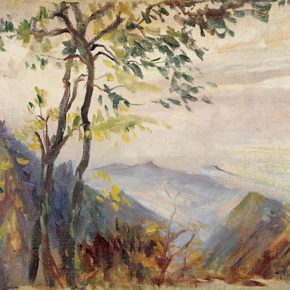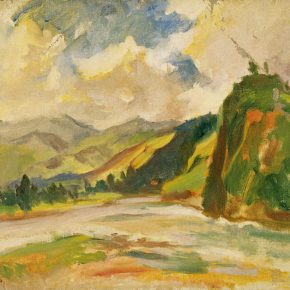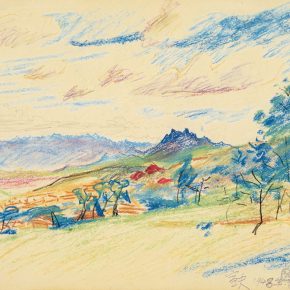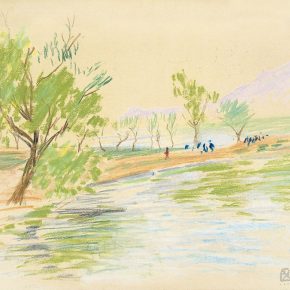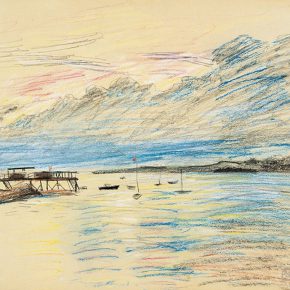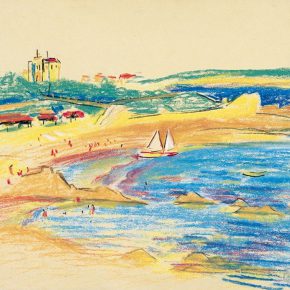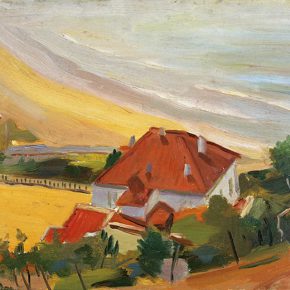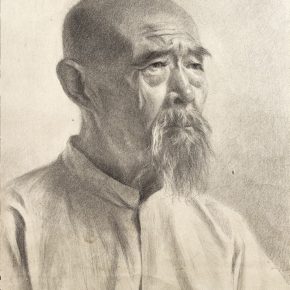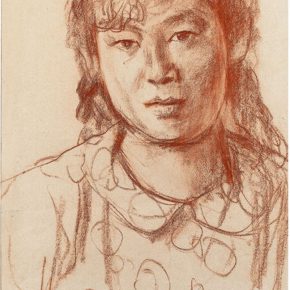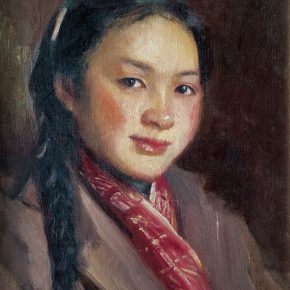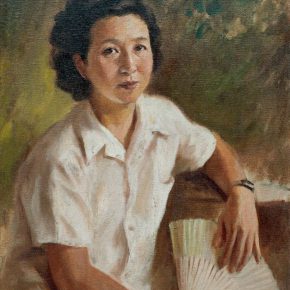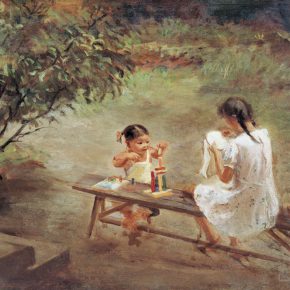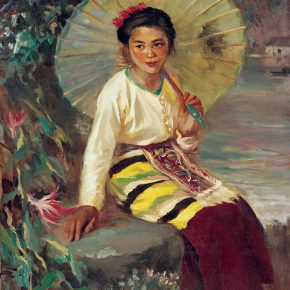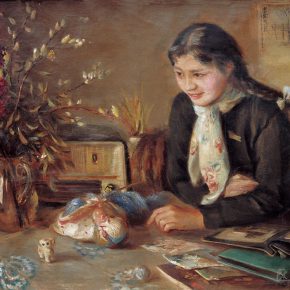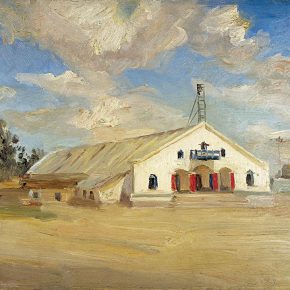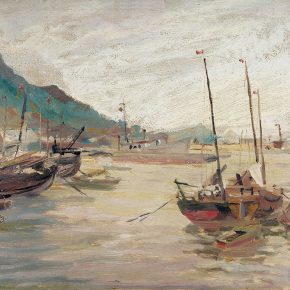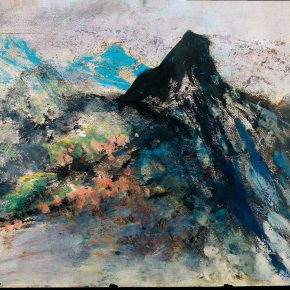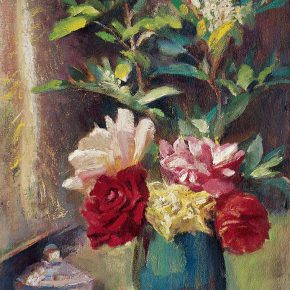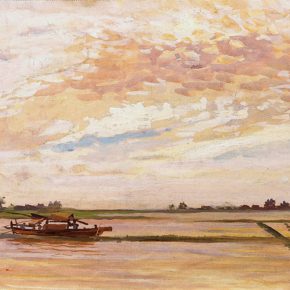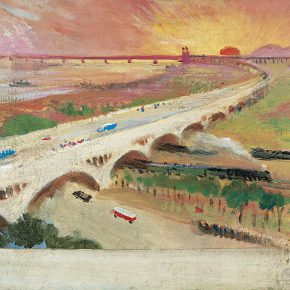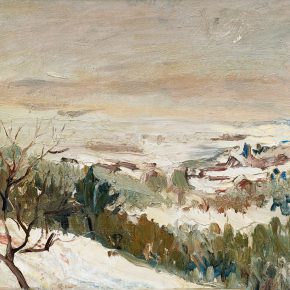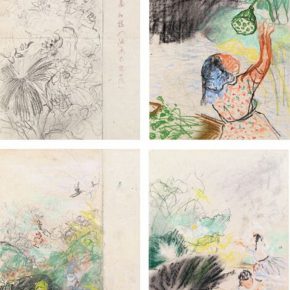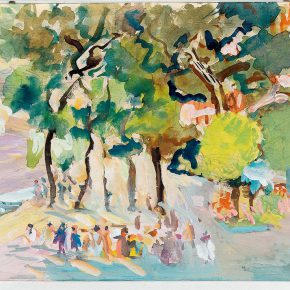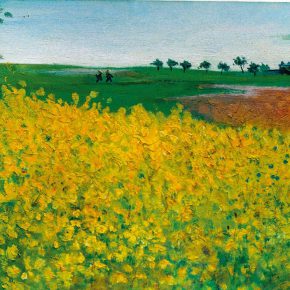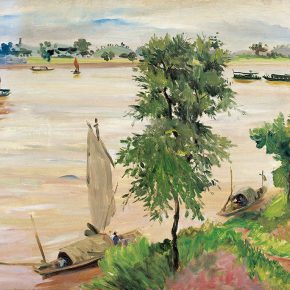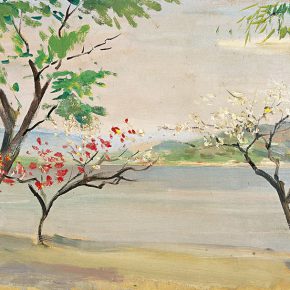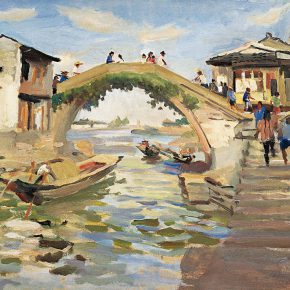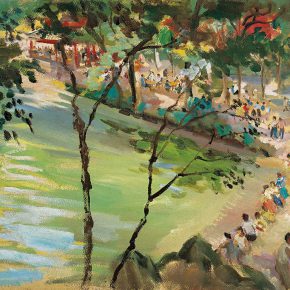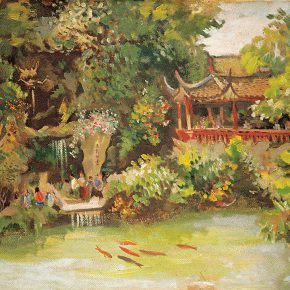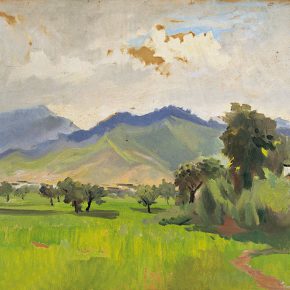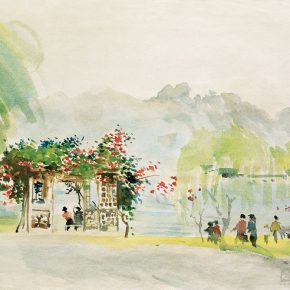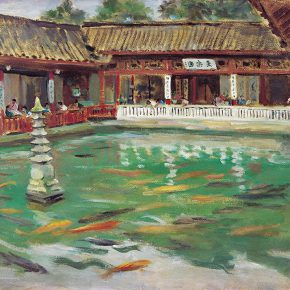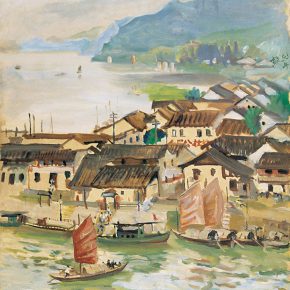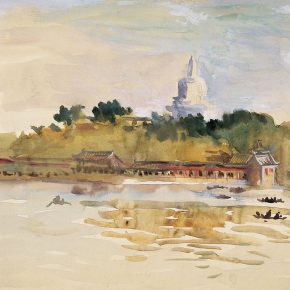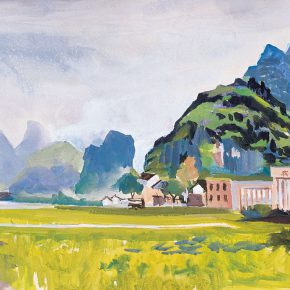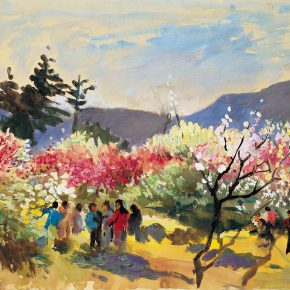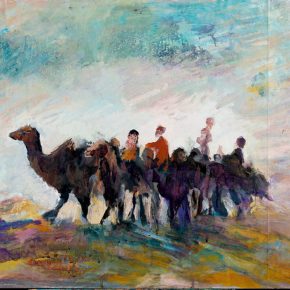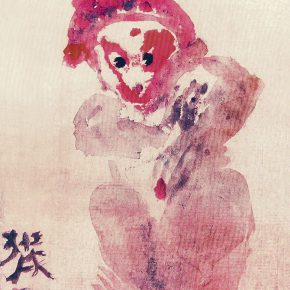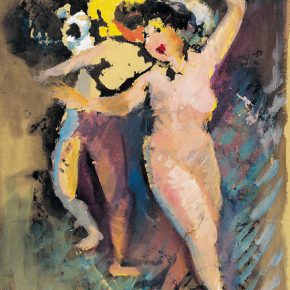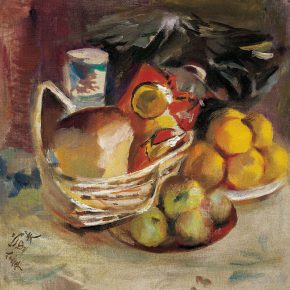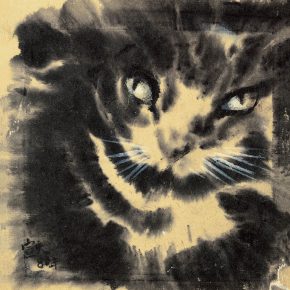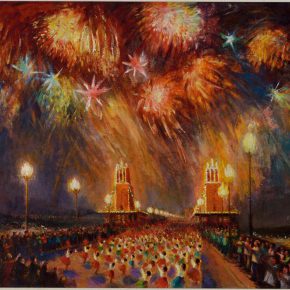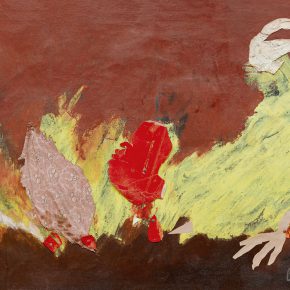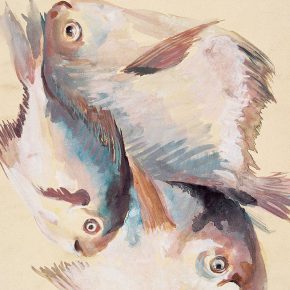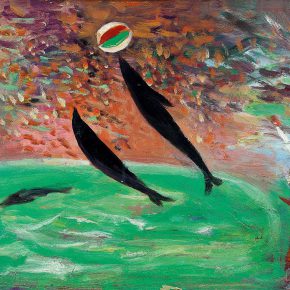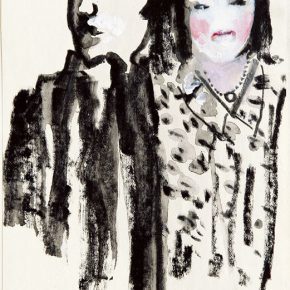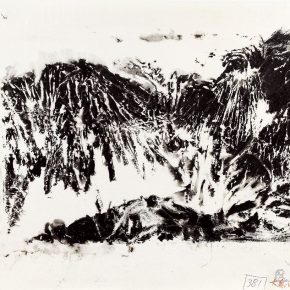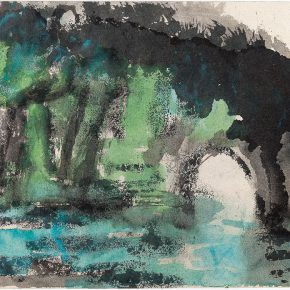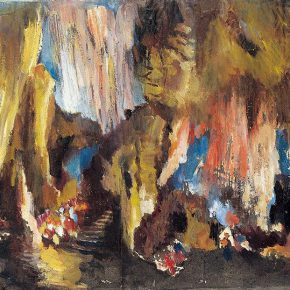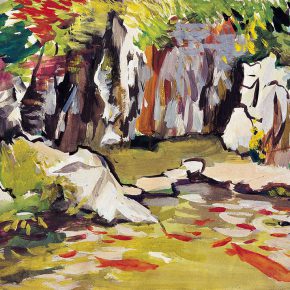Qin Xuanfu
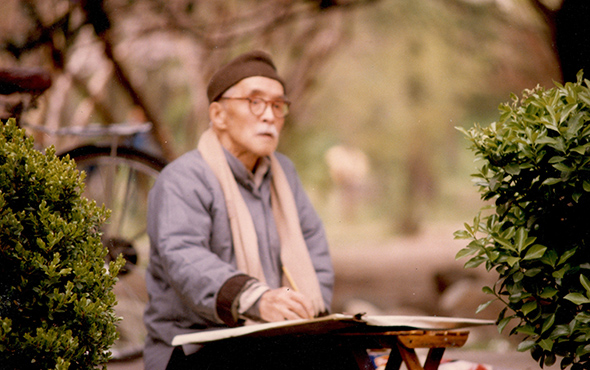
Born in Guilin, Guangxi, Qin Xuanfu (1906-1998), formerly known as Qin Shanyu is an art historian and art educator. In 1929 he graduated from the National Tsinghua University. From 1930 to 1934, he studied painting and art history at the Lucien Simon Studio in école nationale supérieure des Beaux-arts de Paris and the École du Louvre.
In 1933, the China Art Society in France was established in the home of Chang Shuhong, Qin Xuanfu became a member of the association. In the first 10 years after returning home, Qin Xuanfu taught painting and Western art history at the National Beiping Art School, at the same time he was also a lecturer in the Department of Foreign Language at the National Tsinghua University and editor of the Ta Kung Pao. After the outbreak of the July 7 Incident, Qin Xuanfu and his family followed the National Beiping Art School when it moved to Hunan, Yunnan as well as many other places, and ultimately arrived in Phoenix Mountain Chongqing. In 1944, Qin Xuanfu served at the Department of Art, National Central University, and with the Central University settled in Nanjing in 1946. After the founding of new China, he successively served in Nanjing University and Nanjing Normal University. He was a former director of the China Artists Association, Vice Chairman of Jiangsu Artists Association, Vice Chairman of the Preparatory Committee at the Art Education Research Association of National Education Society, member of the editorial board of fine arts for “Ci Hai” and “Encyclopedia of China”.
Qin Xuanfu upheld his attitude towards life as “embracing the life and embracing the nature, fight to the death”, being courageous in breaking through the self, with a far-reaching impact on the development of Chinese oil painting. The oil paintings “Lady Kabangqi’s Portrait”, “A Maid”, “Merry-Go-Round” have been selected for the Spring Salon of Paris, France, Independent Salon. These works include “A Maid”, “Carmen”, “Wang Henei’s Portrait”, and “Wu Zuoren’s Portrait” and so on which are collected by the National Art Museum of China, Jiangsu Provincial Art Museum, CAFA Art Museum, Nanjing Normal University.
Qin Xuanfu devoted his life to the research, dissemination of Western art history and art education in China. In the early years, he published the “Exhibition of Chinese Painting in Paris” (1933), “Read ‘How Do We See Chinese Painting’” (1933), “Do We Need Western Painting?” (1937), “Lecture Notes of the Western Art History” and so on, revealing his significant ability of the research of art history, perennially taught art history and cultivated a number of outstanding talents in art history such as Li Yu, LaoZhu.
In 1933, the China Art Society in France was established. Many artists, including Qin Xuanfu, Lv Sibai, Chang Shuhong, Wang Linyi, returned to China to teach in important art institutions and in turn became the backbone of the domestic art circles. During the War of Resistance against Japan, Qin Xuanfu, Lv Sibai, Wang Linyi, etc., gathered in Chongqing’s Phoenix Mountain.
– An excerpt of “Working Notes: What is a ‘Merry-Go-Round’ – The Exhibition to Commemorate the 110th Anniversary of Qin Xuanfu”
Because the sculpture does not rely on the plot to show the theme of the idea, while the painting, especially the thematic painting of a figure – one must rely on certain circumstances to effectively display thematic thinking. It must be reiterated that Michelangelo used the art of sculpture to create a painting to achieve a high degree of achievement. But his paintings have a tendency to show off the knowledge of anatomy and the ability of perspective and thumbnail.
– An excerpt of “Qin Xuanfu: On the Evaluation of Michelangelo”
We can’t ignore the more valuable things – greatness of shape, precision of composition and color because of the love of the ink color.
– An excerpt of “Qin Xuanfu: How to Look at Chinese Painting”
The so-called “character” is not only in pursuit of the similarity in form, which can be easily achieved by using a mechanical camera. When a painter draws a portrait, he must observe, research, analyze how to reflect the mental activities of the object and the shapes for a long time, and then through the painter’s personality to integrate it in the creation. This painting must be lived.
– An excerpt of “Qin Xuanfu: Talking on Portrait”
Cezanne is very sensitive to color, and he perfectly applied purple in the self-portrait. But if we fixed the yellow light and purple shadow, it is boring. Artists should express what they find but others do not see, and shaping it into the beauty of shape, to infect the reader, enriching people’s spiritual life.
– An excerpt of “Qin Xuanfu: Talking about Impressionism”
The greatest ambition of the life of Ingres was to revive the murals. His work “Apotheosis of Homer” is flat, instead of perspective, symmetrically arranging characters, using a lot of static postures, in order to blend them with the buildings, he used little color, a low hue, thin oil, drawing bodies and clothes in the same way. Although the whole picture is dignified and noble, it is cold and vapid.
– An excerpt of “Qin Xuanfu: On Ingres”
Because of the different period, we can also clearly see the painter’s change of thoughts and feelings from the landscape painting. After liberation, the painter used colorful and passionate brushstrokes to praise beautiful mountains and rivers, rural areas, factories and cities of the motherland.
– An excerpt of “Wang Dafu: Trying to Describe the New Appearance of the Motherland – On Qin Xuanfu’s Oil Paintings”
A small painting with a few light strokes perfectly performs the artist’s passion, the bright colors and vivid images fully foil the artist’s emotions.
– An excerpt of “Qin Zhining: True Feelings of the Artist”
Qin Xuanfu was an avid artist who embraced reality and loved life, and he was good at characters and intended to create large-scale thematic paintings, in this aspect he had also made many beneficial attempts. However, his artistic talent and capability were mainly reflected in the depiction of ordinary people and things.
– An excerpt of “Shao Dazhen: Embracing the Life, Embracing the Nature - Qin Xuanfu’s Art”
Through Uncle Qin’s painting “Mother’s Teaching”, I see again the scene of the familiar, virtuous and kind Aunt Qin – Li Jiazhen together with little Ningsheng in the period of the Phoenix Mountain. In those difficult days, Aunt Qin always quietly bore the heavy housework. She had to wash clothes, cook, look after Jingsheng and Ningsheng, arranging their lives and education.
– An excerpt of “Saone Chang: Uncle Qin Xuanfu and the Artists of Phoenix Mountain in the Memory”
Qin Xuanfu gave a lecture on Western Art History in the evening of 1980, and he became the first teacher of art history in this class. Now I am a professor of art history, and it is my career.
– An excerpt of “LaoZhu: My Teacher Qin Xuanfu’s Class”
Courtesy of the artist, translated by Chen Peihua and edited by Sue/CAFA ART INFO.


